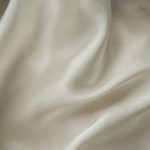You rely on Kevlar cloth fabric daily because it’s incredibly strong—five times stronger than steel by weight—yet lightweight and heat-resistant, handling up to 450°C. It protects your car’s tires, helps aircraft stay safe without extra weight, and keeps workers safe with impact-absorbing gear. Kevlar also boosts construction durability and fire resistance. If you want to understand how this versatile material transforms industries, exploring its various applications reveals even more impressive benefits.
Table of Contents
Key Takeaways
- Kevlar cloth offers exceptional strength and durability, being five times stronger than steel by weight.
- Its heat resistance up to 450°C makes it ideal for high-temperature industrial applications.
- Used in automotive parts, Kevlar enhances safety by reinforcing tires, brake pads, and body panels.
- In aerospace, Kevlar reduces weight while providing impact resistance and thermal stability for aircraft components.
- Kevlar is essential in protective gear, construction reinforcement, and soundproofing, increasing safety and longevity.
Key Properties of Kevlar Cloth Fabric
Kevlar cloth fabric stands out because of its remarkable strength and durability. When you use Kevlar, you benefit from a material that’s five times stronger than steel by weight. You’ll also appreciate its lightweight nature, making it easier to handle without sacrificing protection.
Kevlar resists heat exceptionally well, withstanding temperatures up to 450°C without melting or degrading. It’s also highly resistant to abrasion and cutting, so you don’t have to worry about wear and tear during tough tasks.
Plus, Kevlar’s chemical stability means you can expose it to various substances without damage. When you choose Kevlar cloth fabric, you’re relying on a material that balances toughness, flexibility, and longevity, making it ideal for demanding industrial environments.
Applications in Automotive Industry
Though the automotive industry demands materials that can handle extreme conditions, you’ll find few as reliable as Kevlar cloth fabric. Its high tensile strength and lightweight nature make it perfect for enhancing both safety and performance in vehicles.
You’ll often see Kevlar used in:
- Reinforcing tires to resist punctures
- Manufacturing brake pads with superior heat resistance
- Constructing protective body panels that absorb impact
- Creating fuel lines that resist wear and corrosion
- Developing soundproofing components to reduce noise
Role in Aerospace and Aviation
When you consider the demands of aerospace and aviation, materials must offer exceptional strength without adding unnecessary weight. Kevlar cloth fabric fits this need perfectly.
You’ll find it used in aircraft components like fuselage panels, engine cowlings, and interior parts where durability and lightness are essential. Its high tensile strength lets you design parts that resist impact and fatigue, enhancing safety and longevity.
Plus, Kevlar’s thermal stability helps it withstand extreme temperatures encountered during flight. Using Kevlar can also improve fuel efficiency by reducing overall aircraft weight.
Kevlar’s thermal stability endures extreme flight temperatures while cutting aircraft weight to boost fuel efficiency.
Whether you’re working on commercial jets or military aircraft, incorporating Kevlar fabric offers a reliable balance of protection and performance, making it a key material in modern aerospace engineering.
Use in Personal Protective Equipment
When you wear Kevlar in personal protective equipment, you’re relying on its strength to keep you safe.
It’s a key material in bulletproof vests, fire-resistant clothing, and impact protection gear.
Understanding these uses shows how Kevlar helps protect people in dangerous situations.
Bulletproof Vest Applications
Because Kevlar cloth fabric offers exceptional strength and lightweight protection, you’ll find it widely used in bulletproof vests.
When you wear one, Kevlar fibers absorb and disperse the impact energy, reducing injury risk. This material lets you stay agile while staying safe.
Imagine how Kevlar helps in these ways:
- Stopping bullets without heavy metal plates weighing you down
- Flexing with your movements for comfort during long wear
- Resisting penetration from sharp objects and shrapnel
- Maintaining durability after multiple impacts
- Offering discreet protection under regular clothing
Fire-Resistant Clothing Benefits
Although fire hazards can arise suddenly, Kevlar cloth fabric gives you reliable fire-resistant protection in hazardous environments.
When you wear clothing made from Kevlar, you benefit from its inherent resistance to flames and high temperatures, which helps prevent burns and injuries. This fabric doesn’t melt or drip when exposed to heat, so it keeps you safer compared to many other materials.
You’ll find Kevlar clothing especially useful if you work around open flames, electrical arcs, or hot surfaces. It’s lightweight and flexible, allowing you to move freely without sacrificing safety.
Plus, Kevlar’s durability means your protective gear will last through repeated exposure to harsh conditions, offering consistent performance.
Choosing Kevlar fire-resistant clothing means you’re prioritizing your safety without compromising comfort or mobility.
Impact Protection Gear
Since impact injuries can happen without warning, you need gear that absorbs shocks and protects your body effectively.
Kevlar cloth fabric is ideal for impact protection gear because it’s lightweight yet incredibly strong. When you wear Kevlar-based equipment, you get reliable defense against blunt force trauma and sharp objects.
Imagine how Kevlar enhances:
- Helmets that shield your head without heavy bulk
- Gloves that protect your hands from cuts and impacts
- Knee and elbow pads that absorb shocks during falls
- Protective vests that guard essential organs
- Motorcycle jackets that resist abrasion in crashes
Contributions to Construction and Infrastructure
When you incorporate Kevlar cloth fabric into construction projects, you enhance the strength and durability of various structures. Kevlar’s high tensile strength and resistance to wear make it ideal for reinforcing concrete, bridge supports, and protective barriers. It also improves safety by providing impact resistance and fire retardancy in buildings.
| Application | Benefit |
|---|---|
| Concrete reinforcement | Increases structural integrity |
| Bridge supports | Enhances load-bearing capacity |
| Protective barriers | Improves impact resistance |
| Fireproofing layers | Adds fire retardancy |
Using Kevlar, you can extend the lifespan of infrastructure while reducing maintenance costs. Its lightweight nature also simplifies installation, making it a practical choice for modern construction challenges.
Innovations and Future Trends in Kevlar Usage
As technology advances, Kevlar continues to evolve beyond traditional applications, offering exciting possibilities for the future. You’ll find Kevlar integrated into innovative fields, enhancing safety, performance, and sustainability.
Imagine using Kevlar in:
- Lightweight, flexible body armor with enhanced comfort
- High-strength composites for aerospace and automotive industries
- Durable, cut-resistant gloves for industrial workers
- Reinforced sports equipment improving durability and impact resistance
- Smart textiles embedded with sensors for health monitoring
These trends show Kevlar’s potential to revolutionize how you interact with protective materials daily.
As manufacturers explore nanotechnology and hybrid composites, you can expect even stronger, lighter, and more adaptable Kevlar products. Staying informed about these innovations helps you appreciate Kevlar’s expanding role in shaping safer, more efficient industrial solutions.
Frequently Asked Questions
How Is Kevlar Cloth Fabric Manufactured?
You might think Kevlar’s strength comes magically, but it’s actually spun from liquid crystal polymers. You’ll watch fibers form, then weave tightly, creating that tough fabric you rely on for protection and durability.
What Are the Environmental Impacts of Kevlar Production?
You’ll find that producing Kevlar uses a lot of energy and chemicals, which can harm the environment. However, its durability helps reduce waste by making long-lasting products, balancing some negative impacts.
Can Kevlar Fabric Be Recycled or Reused?
Sure, you can totally toss your Kevlar fabric into the recycling bin—just kidding! Recycling Kevlar is tricky, but you can reuse it creatively, like in crafts or protective gear, extending its tough, heroic life.
How Does Kevlar Compare to Other Aramid Fibers?
You’ll find Kevlar stronger and more heat-resistant than many aramid fibers. It’s lighter yet tougher, making it ideal for protective gear. However, some aramids offer better flexibility, so choose based on your specific needs.
What Are Common Care and Maintenance Tips for Kevlar Fabric?
When it comes to Kevlar, don’t throw the baby out with the bathwater—avoid harsh chemicals and machine drying. You should gently hand wash it with mild detergent and air dry to keep its strength intact.
- Does Chiffon Fabric Stink - July 15, 2025
- Does Chiffon Fabric Affect the Economy - July 15, 2025
- Does Cotton Fabric Have a Nap - July 15, 2025







